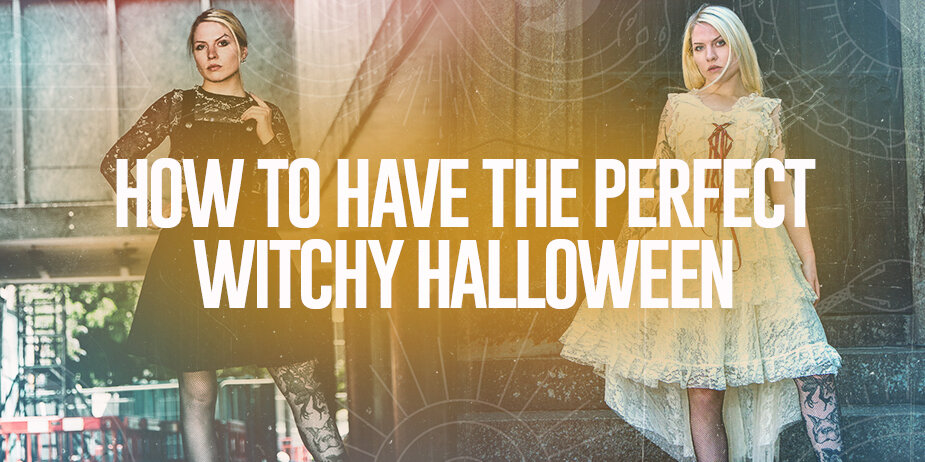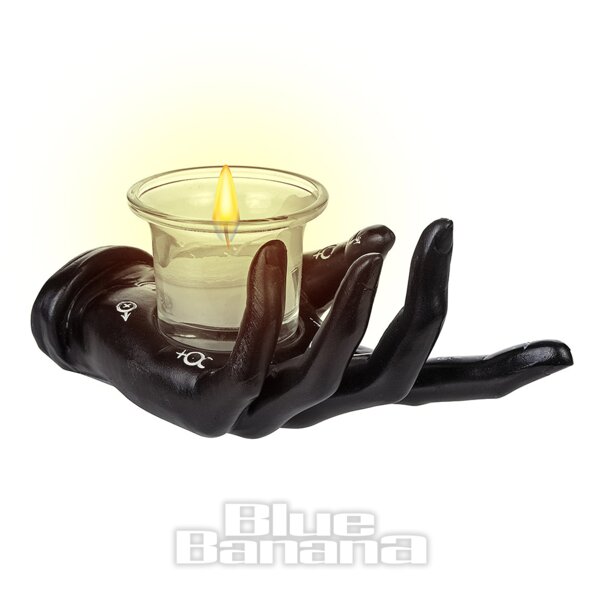
HOT TOPICS

Nov 3, 2023

Sep 22, 2023

Sep 12, 2023

Apr 23, 2022

LATEST
Dec 4, 2025

Nov 20, 2025

Nov 7, 2025

Oct 24, 2025

Oct 17, 2025


How to Have a Witchy Halloween!
Featured Products
Halloween has Christian etymology, with the phrase deriving from being the evening before the Christian holidays All Saints’ Day on the 1st of November and All Souls’ Day on the 2nd. These days are dedicated to honouring all saints and praying for the recently deceased on their journey to heaven. Celtic countries have also been known to practice certain traditions specific to Halloween (or Samhain) for centuries, such as leaving food and offerings on the doorstep for any of the dead that return to their previous homes and loved ones on this night. Many of our current Halloween traditions have Celtic origins, such as the practice of dressing up in costumes and as monsters, pumpkin carving, as well as trick-or-treating!
The Celts believed that Halloween was the night that the veil between the spirit realm and the living was at its thinnest, allowing spirits to cross over into our world. As we mentioned above, sometimes this was returning loved ones; however, the Celts also believed that malevolent spirits could cross over to try to lure people to their own deaths. Harmful trickster spirits such as fairies and ghouls were warded off by dressing in costumes and masks to disguise living people (this is the root of the tradition of dressing up on Halloween night!), and bones from slaughtered livestock were cast into a communal bonfire for protection. Turnips were also hollowed out and carved to resemble protective spirits and ward off wandering ghosts; this changed to pumpkins when Irish immigrants moved to the US.
It was also believed that this weakened barrier between worlds allowed Celtic priests, or druids, to be able to make predictions about the future. Many rituals were said to surround death and marriage. As Halloween Eve was said to be the best day to practice divination, many young women would seek out the elders for advice on their future husbands. Such divinations were cast using apples and burning hazelnuts. This tradition is where the association between witches and Halloween first began, solidifying during the witch hunts across Europe and the Salem Trials in 19th Century America.
If you’re a practising witch looking for some new rituals on how to celebrate Samhain, or you’re simply interested in trying new ways to celebrate the holiday, here are some rites to try. Have a perfectly witchy Halloween this year by finding the ritual that aligns with you.
Cleanse:
Samhain was a festival akin to New Year's Eve in modern standards, celebrating the passing of summer to winter and of any loved ones. As we mentioned above, it’s a time for remembrance, but also new beginnings.
If you keep a witch altar in your abode, replace anything left over from the autumn equinox (Mabon) and set up any ancestral and Samhain-related offerings. If you’re not sure where to start, don’t worry! We’ll cover how to set up or complete any rituals for beginners.
Choose a space that’s out of the way so as not to be knocked over or disturbed, but not removed from the rest of the house; some space on a shelf or windowsill in the living room or kitchen could work perfectly! Keeping your altar in a central room of your home helps to cleanse any lingering energies as you pass through or relax. Keeping your altar in a room you frequent is also great as a small reminder to tend to it, particularly when observing Samhain, as this is rooted in paying respects to any benevolent spirits and warding off any malignant ones.
In your altar, you should include offerings for each element: Earth, Air, Water, and Fire.
- For Earth, this can be as simple as setting out some stones or crystals, or get inspired by tradition and set out food offerings such as dried apples, corn kernels, bread, or fruit. Consider including dried pomegranate seeds to represent the seeds of the underworld (as our connection to this plane is strongest on Halloween night), and pumpkins are an easy-to-get option that symbolise the end of the harvest.
- Typically, Fire is observed by lighting candles or lanterns. Black candles are ideal, not only for the spooky atmosphere, but because they’re also used for protection and banishing negative energy. A white candle is also always useful in an altar to observe passovers, as they symbolise cleansing.
- Air can be included through burning incense. Mugwort is great for observing Samhain, as it is said to help with your dreams and opening up your intuition, ideal if you are looking to commune with your ancestral spirits.
- Salt water is another great, protective option for Water; ward your home and spirit against negative energies for the upcoming year!
Divination:
As the barrier between realms is at its thinnest at this time of year, this is the perfect time to practice some divination techniques.
As the veil is thinnest at this time of year, scrying can be incredibly rewarding. Scrying is a method of asking for clarity and personal guidance, as well as direction and inspiration for the future. Traditionally, obsidian may be used for scrying, but any reflective surface can be used. If you’re trying scrying for the first time, using what you’re first drawn to (whether that be a pool of water, a crystal ball, or a mirror) could help boost your chances of success. Scrying is often about the subconscious, and can be helpful for achieving clarity in your own mind.
To begin scrying, find a quiet space and first focus on relaxing. Traditionally, scrying was done at night as it was connected to the moon. It’s also a great time to relax and clear your mind. Even if you are not looking for any extra insight at the time, entering the meditative headspace for scrying can be extremely beneficial in reducing stress. Close your eyes and centre yourself; concentrate on your breathing, and let go of any troubles of the day. Once you feel centred, slowly shift your focus from your breathing to your scrying tool. Keep your mind clear, and try to take note of any images or words that appear either in your mind’s eye or directly in the reflective surface.
Scrying takes practice, but the powerful energies around Halloween mean that it’s a great time to attempt it! We recommend practising in the build-up to Halloween as well, so that you can make the most of the night whilst the barrier is thinnest. Samhain is the best time to ask your ancestors for guidance, and many say they receive important messages that help them throughout the next year.
If scrying doesn’t sound like your cup of tea, tarot readings are another fantastic way to practice some divination without necessitating a quiet space and meditative state. Samhain provides a powerful energy for the cards to draw from, and answers can appear clearer than usual.
One basic but effective method is a three-card draw, with the past represented on the left, the present reflected by the middle card, and the future the right-hand side card. A smaller draw channels the energies more closely, often resulting in clearer results. This classic draw is not only great for beginners, but loved by long-time practitioners. For an informative tarot session, you could ask questions such as:
- How can I overcome any obstacles I’m facing this year?
- What is preventing me from achieving my goals?
- How can I improve my personal relationships?
- What do I need to know about my future love life?
- What can I do to find a job I care about?
- How can I better achieve a good work-life balance?
- What financial habits should I change?
- What should I know about my spiritual path?
- What steps should I take to align with my life purpose?
Try to avoid asking too many questions - whilst there is no real limit, this can lead to confusing or complicated answers that are ultimately unclear and unhelpful. We would recommend asking 3-5 questions for the best results. You shouldn’t ask yes or no questions - whilst divination techniques can help to provide clarity, they are also an opportunity to look deeper and make real change. Keep the dialogue and your mind open to any possibilities; any attempt at divination does not give immutable answers. Tarot cards (particularly looking at the past, present, and future) can help to reveal any behavioural patterns that may be holding you back. Use the tarot as a guide to reflect on your choices, and keep them in mind to help you make informed decisions.
We hope that this quick guide helps you achieve a perfectly witchy Halloween evening! Including one of these small rituals in your celebrations can help provide clarity and purpose for the coming winter. Remember, Samhain is not only about death, but also the rebirth of winter. Take this time to reflect and shed any extra weight or baggage that may have been holding you back so far this year; prune these unwieldy branches to grow back stronger in the spring.














